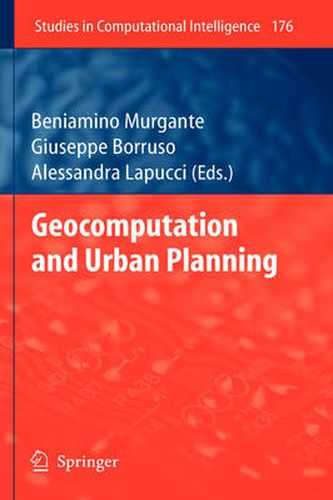Readings Newsletter
Become a Readings Member to make your shopping experience even easier.
Sign in or sign up for free!
You’re not far away from qualifying for FREE standard shipping within Australia
You’ve qualified for FREE standard shipping within Australia
The cart is loading…






This title is printed to order. This book may have been self-published. If so, we cannot guarantee the quality of the content. In the main most books will have gone through the editing process however some may not. We therefore suggest that you be aware of this before ordering this book. If in doubt check either the author or publisher’s details as we are unable to accept any returns unless they are faulty. Please contact us if you have any questions.
Sixteen years ago, Franklin estimated that about 80% of data contain geo-referenced information. To date, the availability of geographic data and information is growing, together with the capacity of users to operate with IT tools and instruments. Spatial data infrastructures are growing and allow a wide number of users to rely on them. This growth has not been fully coupled to an increase of knowledge to support spatial decisions. Spatial analytical techniques, geographical analysis and modelling methods are therefore required to analyse data and to facilitate the decision process at all levels. Old geographical issues can find an answer thanks to new methods and instruments, while new issues are developing, challenging researchers towards new solutions. This volume aims to contribute to the development of new techniques and methods to improve the process of knowledge acquisition. The Geocomputational expression is related to the development and the application of new theories, methods and tools in order to provide better solutions to complex geographical problems. The geocomputational analysis discussed in this volume, could be classified according to three main domains of applications; the first one related to spatial decision support system and to spatial uncertainty, the second connected to artificial intelligence, the third based on all spatial statistics techniques.
$9.00 standard shipping within Australia
FREE standard shipping within Australia for orders over $100.00
Express & International shipping calculated at checkout
This title is printed to order. This book may have been self-published. If so, we cannot guarantee the quality of the content. In the main most books will have gone through the editing process however some may not. We therefore suggest that you be aware of this before ordering this book. If in doubt check either the author or publisher’s details as we are unable to accept any returns unless they are faulty. Please contact us if you have any questions.
Sixteen years ago, Franklin estimated that about 80% of data contain geo-referenced information. To date, the availability of geographic data and information is growing, together with the capacity of users to operate with IT tools and instruments. Spatial data infrastructures are growing and allow a wide number of users to rely on them. This growth has not been fully coupled to an increase of knowledge to support spatial decisions. Spatial analytical techniques, geographical analysis and modelling methods are therefore required to analyse data and to facilitate the decision process at all levels. Old geographical issues can find an answer thanks to new methods and instruments, while new issues are developing, challenging researchers towards new solutions. This volume aims to contribute to the development of new techniques and methods to improve the process of knowledge acquisition. The Geocomputational expression is related to the development and the application of new theories, methods and tools in order to provide better solutions to complex geographical problems. The geocomputational analysis discussed in this volume, could be classified according to three main domains of applications; the first one related to spatial decision support system and to spatial uncertainty, the second connected to artificial intelligence, the third based on all spatial statistics techniques.